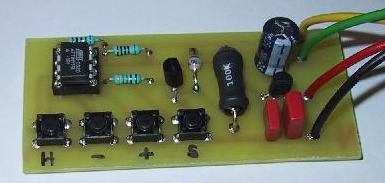Gauge Corrector


As a DeTomaso Pantera owner, I'm "blessed" with italian Veglia gauges, connected to american Ford senders. Neither of which are particulary high quality.
To solve the problem with inaccurate readings, extremely dark
illumination, glass fogging, I decided to replace all of the small
gauges with higher quality VDO gauges and senders. The only problem
with this is the fuel tank sender, which is seriously hard to replace
with one that would work properly with the VDO gauge.
I found a document that said that the sender has a resistance of
0Ω when full and 200Ω when empty.
VDO has some special US tank gauges which are 33Ω full and 240Ω empty, and I ordered such a gauge from Summit Racing. I figured that adding a 33Ω resistor in series would work out nicely for both full and empty, and hopefully also for intermediate levels. Unfortunately the 200Ω at empty proved to be around 300Ω in reality, so the choices I had was to add the resistor and have it accurate at full tank, but be off scale when empty, or skip the resistor and have it indicate above full when full, and below empty when empty. Initially I opted for the latter choice.
If you have comments or suggestions, email me at thomas@Hax.SE
Last update: 2005-07-22